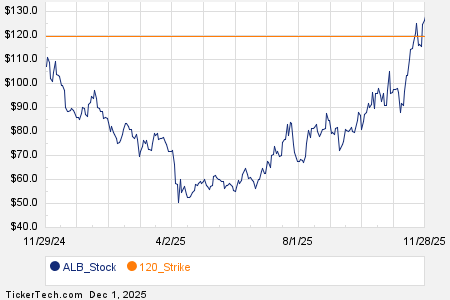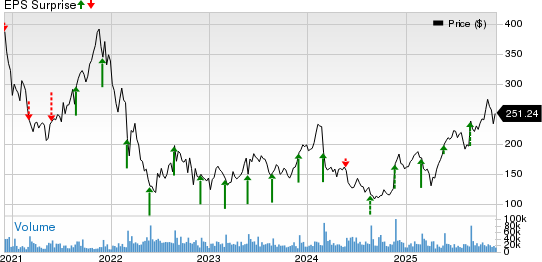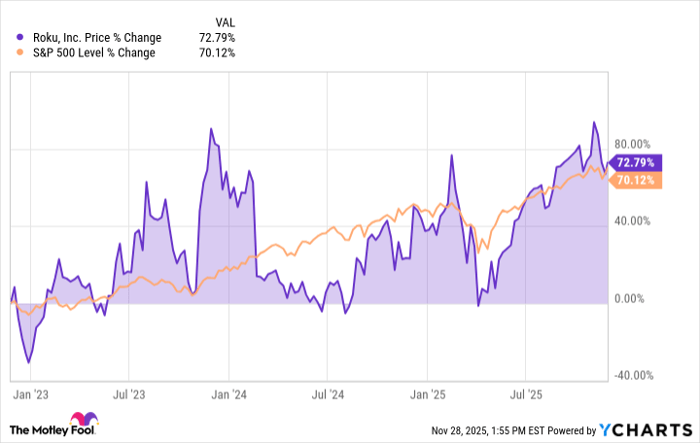Dell Technologies Sees Potential Growth Amid Tariff Exemptions
The Trump administration has recently announced tariff exemptions for various high-tech imports, including smartphones, laptops, semiconductor equipment, and other electronics. This shift could benefit companies like Dell Technologies (NYSE:DELL). Despite experiencing a notable 30% decline in value this year due to tariff and trade war concerns, we view DELL Stock—currently priced around $87—as an attractive buying opportunity, albeit with associated risks. Our evaluation of its valuation, recent operational performance, and financial condition reveals certain weaknesses across critical metrics such as Growth, Profitability, Stability, and Downturn Resilience (detailed below). Nonetheless, the current low valuation enhances its appeal. Investors seeking reduced volatility may consider the Trefis High-Quality portfolio, which has outperformed the S&P 500, achieving returns of over 91% since its inception.

Image by Joshua Woroniecki from Pixabay
Comparing Dell Technologies’ Valuation with the S&P 500
When analyzing Dell Technologies’ valuation metrics relative to the broader market, DELL Stock appears to be significantly undervalued.
- Dell’s price-to-sales (P/S) ratio is 0.6, contrasting sharply with the S&P 500’s ratio of 2.8.
- Moreover, the company’s price-to-operating income (P/EBIT) ratio stands at 8.9, compared to 21.3 for the S&P 500.
- Finally, its price-to-earnings (P/E) ratio is 12.1 versus the benchmark’s 21.3.
Revenue Growth Trends at Dell Technologies
Recent years have shown mixed results for Dell Technologies’ revenue growth.
- Over the past three years, Dell has averaged a revenue decline of 1.5%, while the S&P 500 reported an average increase of 6.2%.
- However, the company’s revenues increased by 8.1% in the last 12 months, rising from $88 billion to $96 billion, outperforming the S&P 500’s growth of 5.3%.
- Additionally, Dell’s quarterly revenues grew by 7.2% to $24 billion in the most recent quarter, up from $22 billion a year earlier, compared to a 4.9% increase for the S&P 500.
Profitability of Dell Technologies
In terms of profitability, Dell Technologies lags behind many firms in the Trefis coverage universe.
- Over the last four quarters, Dell’s operating income was $6.2 billion, resulting in a low operating margin of 6.5%, versus 13.1% for the S&P 500.
- Moreover, Dell’s operating cash flow (OCF) during this period was $4.5 billion, leading to an unsatisfactory OCF-to-sales ratio of 4.7%, compared to the benchmark’s 15.7%.
Assessing Financial Stability at Dell Technologies
Dell Technologies’ balance sheet shows significant weaknesses.
- The company reported a debt of $25 billion at the end of the last quarter, while its market capitalization was $58 billion (as of April 11, 2025). This corresponds to a high debt-to-equity ratio of 44.3%, significantly greater than the S&P 500’s 21.5%. [Note: A lower debt-to-equity ratio is more favorable.]
- In total assets of $80 billion, Dell’s cash and cash equivalents comprised only $3.6 billion, resulting in a cash-to-assets ratio of 4.6%, compared to the S&P 500’s 15.0%.
Downturn Resilience of DELL Stock
During recent market downturns, DELL Stock has fared slightly better than the benchmark S&P 500 index. As the U.S. economy navigates potential turbulence, it’s essential to consider how Dell might perform in another recession. Our dashboard, “How Low Can Stocks Go During A Market Crash,” illustrates how key stocks have performed during previous downturns.
Inflation Shock (2022)
- During this period, DELL Stock dropped by 44.4%, falling from $60.77 on February 9, 2022, to $33.77 on October 12, 2022, compared to the S&P 500’s decline of 25.4%.
- However, the Stock recovered completely to its pre-crisis peak by September 1, 2023.
- Since that recovery, it has peaked at $179.21 on May 29, 2024, and currently trades around $87.
Covid Pandemic (2020)
- DELL Stock experienced a decline of 45.9%, from a high of $26.87 on February 19, 2020, to $14.54 on March 18, 2020, while the S&P 500 fell 33.9%.
- Nonetheless, the stock fully recovered to its pre-crisis peak by June 29, 2020.
Conclusion: Implications for DELL Stock
To summarize, Dell Technologies’ performance metrics indicate the following:
- Growth: Strong
- Profitability: Very Weak
- Financial Stability: Very Weak
- Downturn Resilience: Neutral
- Overall: Neutral
While our analysis indicates that DELL Stock carries certain risks due to its moderate performance across key areas, its extremely low valuation renders it an appealing investment. Additionally, we expect to see positive developments from the new tariff exemptions affecting products like laptops and electronics. Coupled with Dell’s recent announcement of an additional $10 billion in share repurchases and a dividend increase, these factors may bolster its Stock price growth.
For those concerned about the risks of investing in a single Stock, the Trefis High-Quality (HQ) Portfolio, consisting of 30 diversified stocks, has consistently outperformed the S&P 500 over the past four years. Why is that? The HQ Portfolio stocks yielded better returns with lower risk compared to the benchmark index, offering more stable performance metrics.
see all Trefis Price Estimates
The views and opinions expressed herein are those of the author and do not necessarily reflect those of Nasdaq, Inc.








